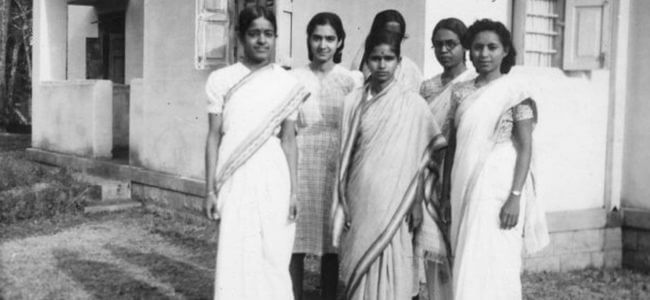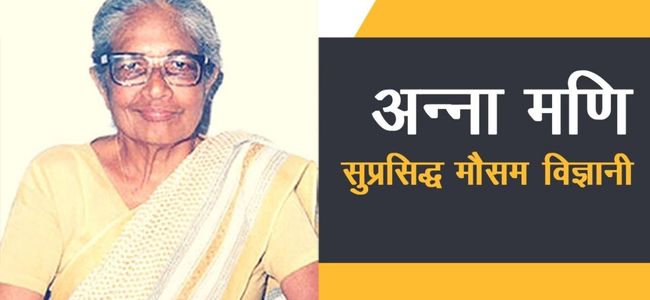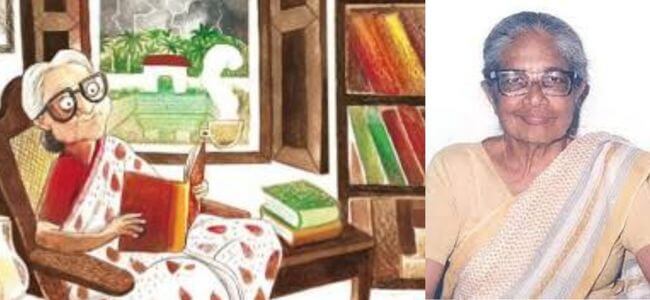India- celebrated 104th birthday of Indian physicist and meteorologist Anna Mani, one of the country’s first women scientists
Today (23 August) Google Doodle celebrated the 104th birthday of Indian physicist and meteorologist Anna Mani, one of the country’s first female scientists. His life’s work and research made it possible for India to make accurate weather forecasts and laid the groundwork for the country to use renewable energy.
Born on this day in 1918, Mani grew up in the former state of Travancore (present-day Kerala). He spent his formative years immersed in books. By the age of 12, Mani had read almost every book in his public library! She remained an avid reader throughout her life.
After high school, she did her Intermediate Science course at Women’s Christian College (WCC) and completed her Bachelor of Science with Honors in Physics and Chemistry from Presidency College, Madras. After graduation, he taught at WCC for a year and got a scholarship for postgraduate studies at the Indian Institute of Science, Bangalore. Here, under the guidance of Nobel laureate Sir C V Raman, he studied spectroscopy, specializing in diamonds and rubies.
Between 1942 and 1945, he published five papers, earning his Ph.D. dissertation, and began a graduate program at Imperial College, London, where he specialized in meteorological instrumentation.
He began working for the India Meteorological Department upon his return to India in 1948, where he helped the country design and manufacture its own weather instruments. She excelled so much in this male-dominated field that by 1953 she became the head of the division. Under his leadership, more than 100 weather instrument designs were simplified and standardized for production.
Mani was also an early advocate of alternative energy sources. During the 1950s, he established a network of solar radiation monitoring stations and published several papers on sustainable energy measurement.
Mani later became the Deputy Director General of the India Meteorological Department, and held several key positions in the United Nations World Meteorological Organization. In 1987, he won the INSA K. R. Ramanathan Medal for Outstanding Contribution to Science.
After his retirement, he was appointed as a trustee of the Raman Research Institute in Bangalore. She also founded a company that manufactures solar and wind power equipment.

Happy 104th Birthday, Anna Mani! Your life’s work inspired bright days for this world.
Anna Mani’s birth anniversary: Google on Tuesday (August 23, 2022) celebrated the 104th birth anniversary of Indian physicist and meteorologist Anna Mani, one of the country’s first women scientists, with a special doodle. Born on this day in 1918, Anna Mani was known for her work and research that made it possible to make
accurate weather forecasts for India.
Google said, “Happy 104th Birthday, Anna Mani! Your life’s work inspired the golden days of this world.”
An avid reader throughout his life, Mani grew up in the former state of Travancore (present-day Kerala). After high school, she did her Intermediate Science course at Women’s Christian College (WCC) and completed her Bachelor of Science with Honors in Physics and Chemistry from Presidency College, Madras.
After graduation, Anna Mani taught at WCC for a year and received a scholarship for postgraduate studies at the Indian Institute of Science, Bangalore. After that, he studied spectroscopy under the guidance of Nobel laureate Sir CV Raman, specializing in diamonds and rubies.
Mani published five papers, completed a PhD dissertation between 1942 and 1945, and also began a graduate program at Imperial College, London, where he learned to specialize in meteorological instruments.
Anna Mani started working for IMD in 1948
Returning to India in 1948, Anna Mani began working for the India Meteorological Department, where he helped the country design and manufacture its own weather instruments. In 1953, she became the head of the division, and under her leadership, more than 100 weather instrument designs were simplified and standardized for production.
During the 1950s, Mani also established a network of solar radiation monitoring stations and published several papers on sustainable energy measurement.
Anna Mani held key positions in the United Nations World Meteorological Organization
Subsequently, Anna Mani became the Deputy Director General of the India Meteorological Department, and also held various key positions in the United Nations World Meteorological Organization.
In 1987, he won the INSA KR Ramanathan Medal for Outstanding Contribution to Science.
After his retirement, Mani was appointed as a trustee of the Raman Research Institute in Bangalore.
Anna Mani was an Indian physicist and meteorologist who made many valuable contributions in the design of weather observation instruments, which play an important role in making India self-reliant in measuring aspects of weather. She was also an early advocate for using solar and wind power as alternative energy sources, predicting the benefits she promised for her country.
Mani was born on 23 August 1918 in Peermade, a village in the state of Kerala, India. The seventh of eight children, Mani enjoyed a high-class upbringing when men were preparing for professional careers and women were preparing for professional careers.

Railu was ready for life.
But Mani had other interests. An avid reader, Mani is said to have read almost all the books in the local public library. For her eighth birthday, at her request, she was given on the set of Encyclopdia Britannica instead of her family’s traditional diamond earrings.
After earning a bachelor’s degree in chemistry and physics in 1939, Mani wrote five papers on the spectroscopy of diamonds and rubies, but received his Ph.D. been denied. Because he had not previously earned a master’s degree.
In 1945, he won a scholarship to study in England, learning about meteorology and the instruments needed to measure changes in the weather. Three years later, she returned to India to work for the India Meteorological Department, where she helped the country produce its own weather-monitoring instruments. By 1953, she was leading the division, simplifying the design and production of over 100 weather instruments.
In the 1950s, he established a network of solar radiation monitoring stations across India for future solar power projects. He also built a workshop to make instruments that measure wind speed and solar radiation. His interest in studying ozone – the gas that protects life on Earth from harmful ultraviolet radiation – led to the creation of the Ozonesonde, a balloon-borne instrument for measuring ozone levels.
Mani serving as the Deputy Director General of the Indian Meteorological Department till his retirement in 1976.




